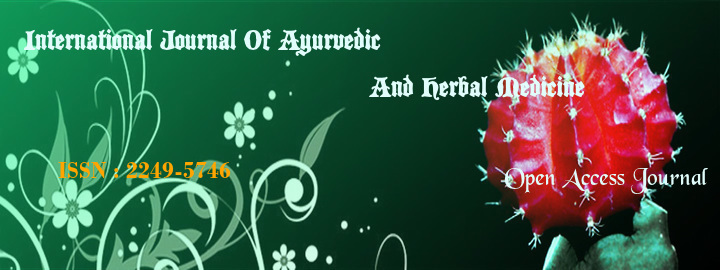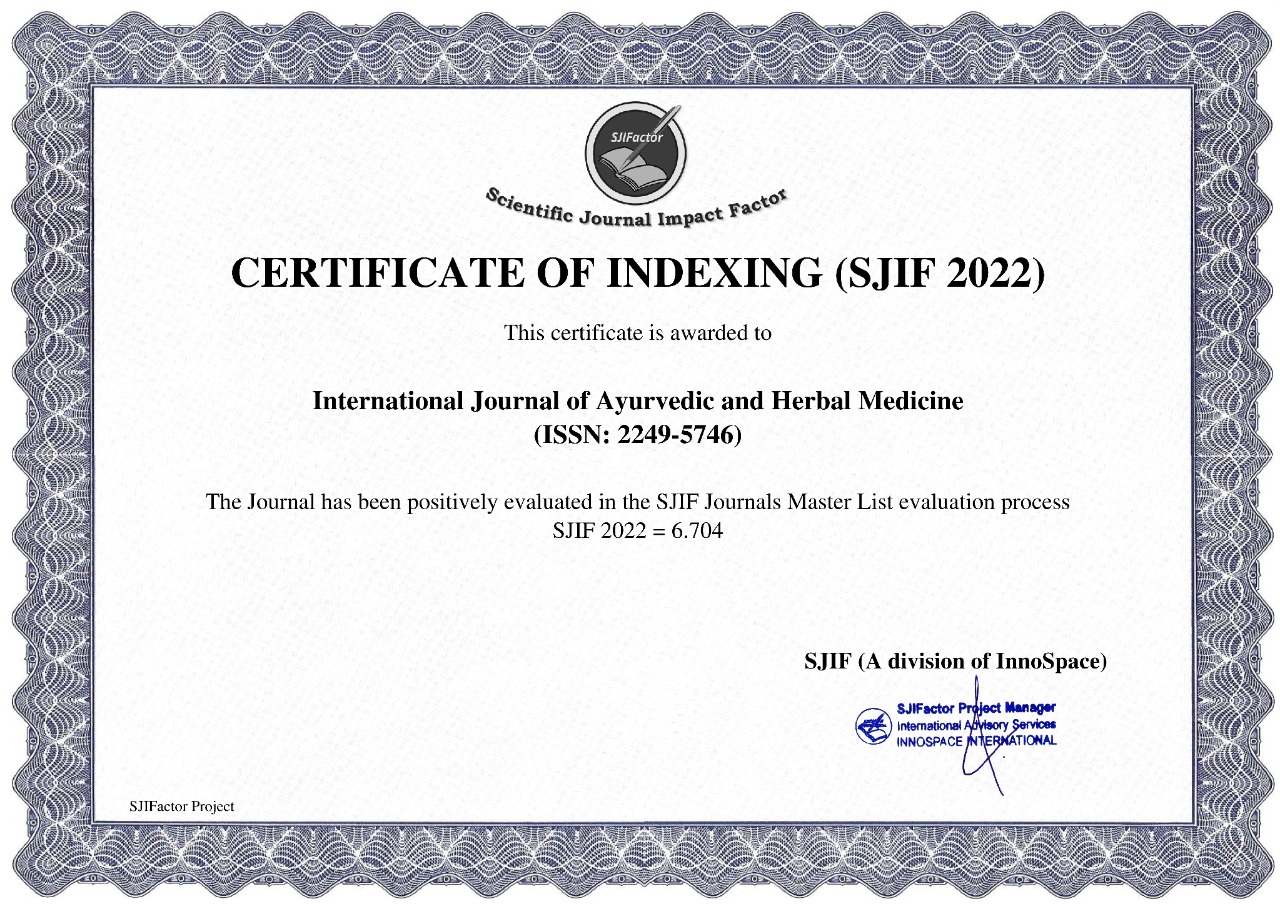


1Surendran. A. Sarath, 2Dr. C.K. Jayanthi
DOI : http://dx.doi.org/10.47191/ijahm/v11i6.05
1PG scholar, Mannam Ayurveda Cooperative Medical College, Pandalam
2 Associate Proffessor, Department of Dravyaguna Vijnana, Mannam Ayurveda Cooperative Medical College , Pandalam
ABSTRACT:
India is a country with a wide variety of flora. Although Ayurveda recognizes very Dravyaas useful, we can only find a limited number of medicinal plants mentioned in Ayurvedic classical textbooks. Acharyas also mentioned we should identify and learn the uses of unknown medicinal plants from people who are residing near the forest. In the current era, that type ofethnomedical practice has to be scientifically evaluated. Also considering the increased demand and over-exploitation of the existing marketed medicines it is essential to add the extra pharmacopeial drugs to the ayurvedic pharmacopeia. For this, all the principles of the drug action put forward by our great acharyas have to be considered. For that detailed analysis shall be applied by using the well-established existing models and methodologies.Though Acharyas had mentioned Sapthapadart has like Dravya, Rasa, etcas a medium for treatment, Vipakais considered as special among them because of its relation with the Agni. The development of the sapthadhatu and tridoshaarebased on this Agnipaka. After paka of Dravya only the real action of it got cleared. ThusVipaka becomes responsible for several metabolic processes in the body. On this background, the present study was taken up for analysis of Vipaka of medicinal plant Drynariaquercifolia. Linn is of Polypodiaceae family, and which is traditionally used in peptic ulcer, jaundice, curing insanity, etc in different regions of India. The outcome of the study can be considered as preliminary evidence and will hopefully inspire more studies with different parameters for further validation.
KEYWORDS: Drynariaquercifolia, Vipaka, Rasapanchaka.
REFERENCES:
- Shashirekha H.K , Sukumar Sushant Bargale, Charakasamhitha Vol 1 Sutrasthana, First Edition, NewDelhi, Chaukhambha Publications, 2019. 27/329,330.
- Shashirekha H.K , Sukumar Sushant Bargale, Charakasamhitha Vol 1 Sutrasthana, First Edition, NewDelhi, Chaukhambha Publications, 2019. 4/20.
- Shashirekha H.K , Sukumar Sushant Bargale, Charakasamhitha Vol 1 Sutrasthana, First Edition, NewDelhi, Chaukhambha Publications, 2019. 4/20. 1/120.
- S.C , Rasa Panchaka, third edition, Varanasi , ChowkhambaKrishnadas Academy, 2008.
- Srikantha Murthy K R ,AstangaHrdayam Vol 1 Sutrasthana, Varanasi, ChowkhambaKrishnadas Academy, 2018. 9/20.
- P.V, Susruta Samhita Vol 1 Sutrasthana, Varanasi ,ChaukhambhaVisvabharati, 2018. 40/10.
- BhargavanVaidyan, Rasa vaiseshikaSootram, Trivandrum, Publication Division Govermenment Ayurveda College, 1982. 1/141-149.
- Shashirekha H.K , Sukumar Sushant Bargale, Charakasamhitha Vol 1 Sutrasthana, First Edition, NewDelhi, Chaukhambha Publications, 2019.26/57-59.
- Shashirekha H.K , Sukumar Sushant Bargale, Charakasamhitha Vol 1 Sutrasthana, First Edition, NewDelhi, Chaukhambha Publications, 2019.26/59-62.
- Warrier PK, Nambiar VP, Ramankutty C. Indian Medicinal Plants a compendium of 500 species Volume 2.Chennai: Orient Longman Private Limited; 2007.p.345.
- Nadkarni KM. Indian MateriaMedica Volume 1.3rd edition. Mumbai: Popular Prakashan Private Limited; 1954, Reprint -2005. p. 466.
- KR, Basu BD. Indian Medicinal Plants Volume 4. 2nd Edition. Dehra dun: International Book Distributors; 1935, Reprint – 1999. p. 2747.
- Murthy Chandra Himasagara. Sarngadhara Samhita. Varanasi: Chowkhamba Sanskrit Series Office; 2010. P.111-112
index






















